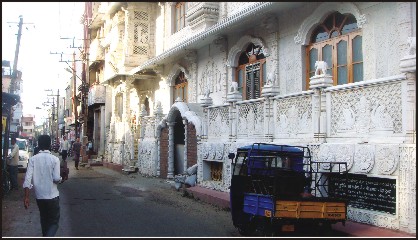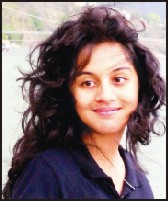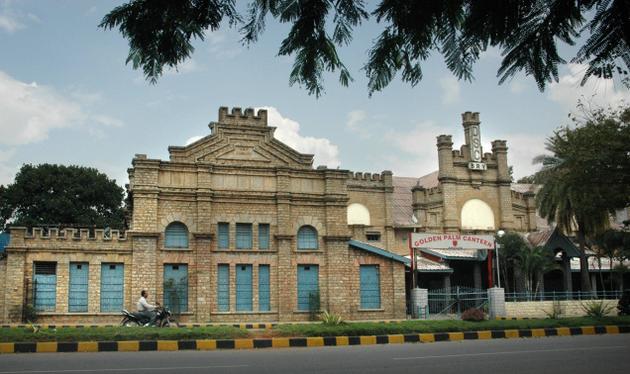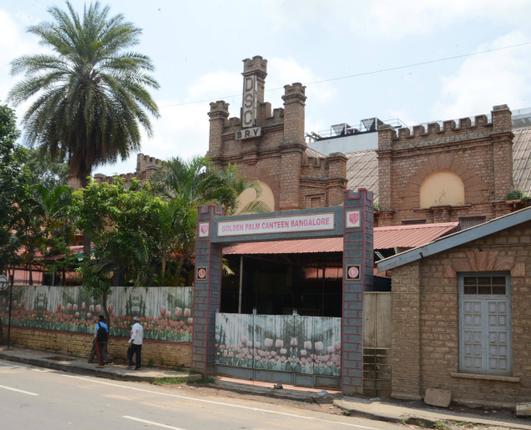Bangalore :
Rohini Sen, the Bangalorean artist whose first solo show in the city opens today, suffered a foot injury a couple of years ago. It left her in extreme, chronic pain. A Chitrakala Parishath graduate, she was teaching arts and running when the pain overtook her life, and marathon plans.
Her exhibition of drawings at Five Forty Five (from June 7 to 14), tells the story of her emotions as she grappled with the negativity surrounding her. She tells City Express how the pain changed her life and art:
You have titled your show ‘The Efficacy of Exquisite Pain’. Why do you describe pain as exquisite? And are you talking about its efficacy in making you see the world differently?
My drawing The Choice Between Freshness and Decay deals with how I began to look at pain as an exquisite gift when my injury posed an emotional dilemma—to look at myself as a person decaying from inside or to celebrate the discovery of a new lens with which to look at myself. And so, pain for me was exquisite in terms of the observations it facilitated. The efficacy of my injury perhaps culminates in these 20 drawings — which otherwise would have been stories I would have never known to tell.
Are you free from pain now? Does your show reflect ’emotion recollected in tranquillity’?
While I think I am free from physiological ‘real’ pain now, anyone who has had a chronic injury will tell you that one is never free from the peripherals that pain leaves in its wake. The fear of the injury relapsing comes back to me every time I am at the gym, training for a run or coming down a staircase. My doctor, Dr KMK Varma of Manipal Hospital, first introduced me to this idea of associations when he sat with me and some of my drawings, trying his best to understand what I was going through!
To reflect on any situation, perhaps quietude is paramount. At the beginning of my injury I was hell bent on looking for a quick fix. Several cortisone shots later (I would get a Cortico steroid shot and get back to training!), I came to realise that it was not about conquering my own body and proving to my injury, “Hey, see? I still finished a 25 km run, so you lost and I won”. Patience, a sense of calm and nurturing my dysfunctional foot really helped me reach a space of acceptance. The drawings Learning to Listen and The Acceptance Conference deal with this idea.
What artistic strategies helped you deal with the pain? Were you drawing and painting through the pain? Any particular works of art that you drew strength from?
I do not think I have ever looked at my drawings as a catharsis of any kind. I was drawing through the second half of my injury: the series started when I was admitted in an ayurvedic hospital. At I-iam Hospital (Yelahanka, Bangalore), between yoga and treatment sessions, I began to reflect on what this injury taught me. More than works of art, I drew great strength from the other patients admitted there. They had come with the determination to transform themselves and begin the process of healing. The 15 days I spent there taught me a certain meditative discipline with which I now approach my art practice, running and training.
What is the status of your marathon dreams?
While I am now ‘back’ on the running scene and successfully finished the TCS 10k in May with the help of my coach Mutie Mohammad and my extraordinarily supportive running team Jayanagar Jaguar, I do not think I nurture serious marathon dreams any more! I am now grateful for whatever little distance my body grants me.
Your paintings portray a wide range of animal characters, from parrots to emus to rats. What explains the absence of human characters?
I made a conscious artistic decision not to make literal representations of situations, but to find visual metaphors. My animals allowed me to say it so much more beautifully because each animal stands for a certain characteristic. My rats talk about the plague that a painful association gives rise to, my emu and other ratites express the frustration I faced when people who did not run kept giving me ‘advice’, and my turtles represent being alive for long—their slowness allows them to absorb the experiential ambit of life in a profound way.
Tell us about your art training.
I was taught Madhubani art by national award-winning master craftsperson Sasikala Devi while I was at Rishi Valley School. I completed my Bachelor’s in visual art from Karnataka Chitrakala Parishath in 2010. I then went on to become an art and running teacher for middle school children at the Mallya Aditi International School. In 2012 I went to do my MA in Art Education at the Rhode Island School of Design, USA, which was a turning point in my artistic approach. Between 2012 and 2014, I have exhibited at quite a few internationally acclaimed galleries such as The Awagami Gallery, Japan, and the Drawing Box, Belgium. I am now represented by Cade Tompkins Projects in the US. This is my first solo show in India.
What advice would you offer people with chronic pain, and sufferers who want to use art as a way out of pain?
I personally do not subscribe to the idea that art is a way out of pain and injury!
My process of drawing allowed me to reflect and make observations.
What do you do when you aren’t drawing and painting?
I am currently adjunct faculty at Srishti School of Art, Design and Technology, where I offer courses on reflective praxis, drawing as a thinking tool, and narrative form and structure.
How did you deal with other people’s comments about your pain?
They were at times comforting and at others unkind, but most often not useful. Using birds that cannot fly, I wanted to say this kind of advice comes often from a feeling of not being able to help. When a person is injured like the way I was, it is really the whole family that suffers sleepless nights, so a lot of the advice was from my loved ones experiencing a sense of helplessness. I also faced a lot of unkind remarks about the weight gain as a result of my injury.
Anything else you would like to share?
More than anything else, I would like for the running fraternity of Bangalore to engage with my work and recognise that this was one runner’s way of reflecting about injury. As Haruki Murakami says in his book What I talk about when I talk about running, “Pain is inevitable, suffering is optional.” I wish to share this with every runner and fitness enthusiast who has faced the obstacle of a sports injury.
source: http://www.newindianexpress.com / The New Indian Express / Home> Cities> Bangalore / by S. R. Ramakrishna / June 07th, 2014









